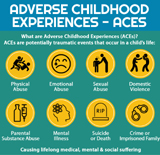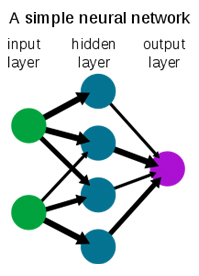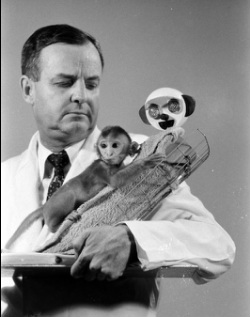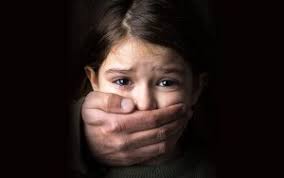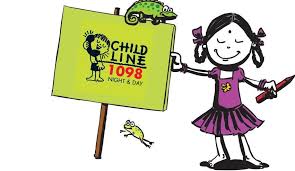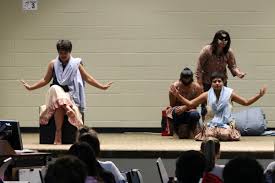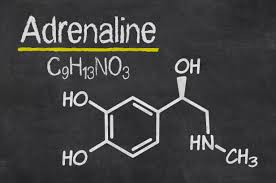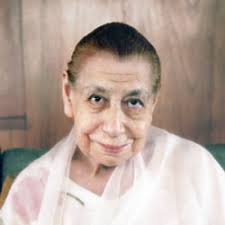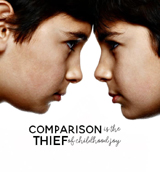Child health
Protecting innocence
Abstract
This article discusses the delicate nature of childhood, in particular the various kinds of abuse and trauma classified under Adverse Childhood Experiences. It dives deep into the most painful form of abuse — child sexual abuse. It explores it from different perspectives — psychological, physiological, sociological, and judicial. The various governmental and non-governmental measures taken to counter this form of abuse in India are discussed as an example. The legal process is critiqued and some improvements are suggested. Crime and a poor childhood are shown to be linked. The Mother’s childhood experiences and how they helped her formulate a vital education programme are discussed. In conclusion, the importance of child welfare and protecting childhood is upheld as the foundations for a sane life in a sane society.
As students of Sri Aurobindo’s teachings, we are called to engage with life, summarised in “All Life is Yoga”. Does it mean we should stand in the frontline of a battlefield, and take lives? Even if we think open combat is the wrong way to tackle problems? Are we doing it to boost self-esteem, to support our family, love our nation? What about activism? Are we to picket in front of a nuclear power station or a factory disgorging chemicals into a river? Are we to fight against human trafficking, or the economic oppression of developing countries, or global terrorism? If we spend an hour looking at the news from around the world, we will find enough causes to fight for that will last us a lifetime. So we have to choose our battles. No ivory tower yoga for us, no excuse of bringing down peace by being peaceful ourselves. Of course, we are assuming you have a modicum of peace yourself. The first objection we get from the sceptic self in our head — and the many sceptical voices outside — is this,“How does activism help? Change should come from within, not from outside. Be the change you want to see in the world.” Really? If I start riding a bicycle, does it solve the problem of cars polluting the air?
All problems stem from bad human behaviour, we know that. In addition, some say human nature is like a dog’s tail. Does it mean that yoga, self-transformation, personal development are all chimeras? Certainly not; and now materialists also agree. Even two decades back neurologists thought the brain stopped growing after reaching adulthood. But now it has been proven that neurogenesis occurs at all ages and it is completely under your control. Behaviour is a neural network. You can change it any time. Look at your past carefully. Did you complain to your teacher when a classmate tried to steal your fancy pen, or eyed your tasty lunch? Did you do that when you were an adult? Instead of pen and lunch, maybe these were shirt and shoes. Didn’t you understand where these needy people came from? You gave away your old clothes, donated to charities, gave your maid a puja bonus. So that is change in your human nature. Did everybody else change in the same way? No, some are still complaining to the teacher. Now find out what triggered that change in you. Surely not ignorant enthusiasts who analysed the situation poorly and applied stopgap fixes. Maybe it was an elder’s advice, a living example, maybe a story or a film that inspired you. So, now you have an answer for the sceptic. And you have an invitation to engage with life, with the problems that are happening around you, if not to you directly. Because every sickness in society has an effect on us: social animals. A disgruntled person becomes the criminal who destroys your happiness, and you pay taxes to keep him locked away in a prison. But since the root cause was not addressed, the next disgruntled man is getting ready for the next criminal act.
Writing and documentary-making and supporting activists are the genres of activism I practise. But to have a quick and direct impact, a policy-maker needs to be involved. I would hope some day my work would reach them. I am a follower of Sri Aurobindo’s and the Mother’s teachings and a psychology student; I have been working in technology for many years. I would like to participate more closely in policy-making, or at least wish others from the Sri Aurobindo community do too. Educational pieces are for spreading awareness, which is not measurable. So, sometimes I feel impatient for change — such as the issue I am going to discuss here, for example. To me it seems of the highest importance.
A child’s growth in the first three years is crucial to his entire life. The Mother was discussing this in 1967, in the Agenda, when the scientific evidences were just coming in (1). Mothers fondle their babies — it’s an instinct. But what are the effects of not nurturing a child in the early stages of development? Human mothers could not be used for this cruel experiment, so monkeys were used in a series of controversial experiments conducted by Harry Harlow in Wisconsin, USA, in the 1930s. He isolated a baby monkey in a cage with two artificial mothers. One was a cloth rag, the other a wire frame that oozed milk. The baby went to the latter when hungry, but clung to the cloth rag otherwise. The experiment done, the monkey was released to socialise with the others of his species. Here is where the controversy deepened. The baby monkey ran to the rag doll and tried to hide in it. Some babies used in the experiment became aggressive. They did not have any empathy and could not function in society. Humans are social animals who need to be acclimatised to society when they are born. They need human touch, caresses, words spoken to them — everything that comes naturally to loving people. War orphans from Eastern Europe adopted by American households soon found out they were not loved. Children born in prisons, allowed to be cuddled by their mothers, grew up healthy, but these orphans ended up in mental institutions.
Child sexual abuse
This article is not about the earliest developmental stage, but the next. Here children are conscious, and have a sense of self. When they are abused they understand it. Child sexual abuse (CSA) is the worst kind of abuse. It leaves permanent scars in the victim’s psyche. Most of the abusers are known to the children, which is how they are enticed in the first place. Sometimes these are the very people who are supposed to be their protectors. Children who have been abused grow up to have difficulties in relationships — with partners and parents. They find it hard to love their own bodies. They have uncontrolled outbursts of rage, which is the past wound erupting like a volcano. Our society does not have a safe place for them to address their issues. Because sex is taboo. Visiting a psychotherapist is taboo. Pointing a finger at a family elder is taboo. It is easy to beguile a child, because they trust an uncle, or cousin, or teacher, or guardian. When they complain, after the damage is done, the family hushes them up. It is social stigma to be branded a pervert, and everybody in the family will suffer the branding. Even the women in the family hush it up, because the perpetrator is the bread-earner. What if they abandon them? As a result, the child represses the suffering and lives warped all her life. This means a wicked man is saved and an innocent child is imprisoned for life.
Aamir Khan ran an episode on child sexual abuse in his TV programme, Satyameva Jayate, in May 2012, which is available online for everyone to watch. Interesting discussions followed and are still going on in their web page1. It is heartening to see how organisations and individuals are responding. More than ten lakh children are reported to be sexually abused in India every year. Note the word reported. When asked, 53% of children said they faced some form of sexual abuse. Three important discoveries were made as part of the Satyameva Jayate research.
1. Young boys are as vulnerable as young girls.
2. All the abusers are men.
3. These men are from all backgrounds — rich, poor, educated, illiterate, urban, rural, from any religion, any caste. And this is true all over the world, developing country or First World. Why men alone? The answer is testosterone, the male sex hormone, a natural steroid, the muscle-building agent. Psychologically, it is responsible for aggression, ego issues, sexual craving. The male body starts producing it earlier than the female body, and keeps on producing it till the end of life. The female hormones are the very opposite; they increase love and empathy. After the child-bearing years, they are produced less and less. Both men and women produce male and female hormones, but only in very different quantities.
Now that we know the gravity of the situation, what are we doing about it? After horrific cases surfaced among the public in India, activists and their supporters marched and clamoured for months. The public outcry was answered in 2012 with a new law — POCSO, Protection of Children from Sexual Offences. It was revised in 2018 to be a little more stringent, because it did not bring down the crime rate as much as anticipated. Why was it not effective, and is still not, after the revision? Because it has two glaring problems. One is that it is only for girl children. Secondly, most of the abuses are done by family members and are not reported. A healthy society does not need laws. A law is needed only as a deterrent in a sick society. When it has come to court, it is already too late. In POCSO cases, the child is given medical attention within 24 hours, and, if required, is rehabilitated in a safe place. Not reporting a case is severely punishable. The cases are heard in Special Courts. The proceedings and investigations are asked to be completed within a year. The sentence can be several years, or life imprisonment, or even death. None of these are punishments a family can afford, monetarily or psychologically. Even a mother wishing to help her child knows she will become destitute, which means not helping the child,after all. Consequently, the majority of the cases are never reported, which makes the law ineffective.
There is an organisation called Childline India Foundation, which has a toll-free telephone helpline for children in distress. Everybody should memorise the number — 1098. Schools should teach it to the children and their parents and have posters of it. How difficult is it to put up a poster in public places, such as banks, train stations, bus stands, shopping malls, restaurants? The greater the awareness there is, the better. More so as a warning to potential abusers.The Foundation started in 1996 for street children, but now includes help for sexually abused children from all sections of the Indian population. An adult or a child can call the number. This call is kept secret. The Foundation pulls in resources such as psychologists, doctors and legal practitioners to resolve issues. Calling this number should be a first step for all cases of CSA, so none remain unreported. And the call should happen before the assault. Even a suspicion should be reported, because it may very well be the saving act. Experts would know how seriously to take a suspicion. They have a database of such cases to back their decisions. The abuser’s name gets entered in the database of suspects and a second suspicion should mandate an action. Whenever a person applies for a job that involves children, this database should be consulted to background-check the candidate. After the 1098 call has been made, the concerned family members and experts can decide together to proceed to court or not.
Restorative justice
An alternative to going to a criminal court could be restorative justice. Here the perpetrator, victim and concerned parties are brought together on a common platform facilitated by subject matter experts. The perpetrator is made to feel for the victim and take responsibility for his actions. He is also educated about his body’s biology and the long-term psychological effects on the victims and their protectors. One of the following actions could result from this forum. The perpetrator or suspect will be taught lifeskills to overcome his biological urges. These may include him starting psychotherapy, joining group therapy, being taught exercises and meditation, given medication. He will be on the watch-list and needs to check in with the Foundation regularly. He may have to compensate monetarily, such as for the child’s psychological treatment. If possible, living arrangements should be changed to safeguard the victim. A Foundation member can be appointed to check in with the child on a regular basis. The root-cause of the man’s perversion should be analysed. If this means a systemic change, it should be taken up. Perhaps men don’t have enough sports to dissipate energy, maybe they are sitting idle for too long, or they have a dead-end and mindless job; their job gives them no power, or they were themselves abused. If all cases are reported, it makes these studies meaningful and can lead to systemic change.
What can victims do to survive their past? One answer is in therapeutic theatre. A drama that started in Bangalore in 2014, then in many cities in India, and has now travelled to the United States, is Positively Shameless. It has five women in its cast, who were all sexually abused as children. And because of that, in their professional lives, they have all become healers. But have they found healing themselves? In the play, they tell their own stories in a stylised form, asking difficult questions, exploring their relationships and their bodies. Therapeutic drama brings catharsis. But a wound of this magnitude cannot just be cured by the victim outgrowing it. Their stories should help future victims escape this fate. Their stories should bring to justice the abusers who, enslaved by their biology or not, need to pay for their actions. Childhood wounding is one of the main reasons for crime in the world. Criminals are the product of social blind sight. The marginalised victims who were voiceless children are now robbing people of their lives and dignities. Dr. Mark Dybul, the CEO of The Global Fund, an organisation that cures epidemics, says the real epidemics are not due to germs; they are because large portions of the human population are ignored and even hated. They are squeezed into ghettos with poor hygiene and nutrition. Unless we welcome, love and embrace them, our existence will remain precarious. They will get us — either as terrorists or carriers of viruses.
So, in order to have a crime-free society, we have to focus on child welfare. Sexual abuse is the worst, but there are nine other kinds of childhood wounding.Together they are called ACEs — Adverse Childhood Experiences. It has been studied in detail by social and medical professionals in the United States, and perhaps in other places too. They have found that people who suffered a poor childhood are affected by it their entire life. They have a weaker immune system and thus are prone to diseases. They live about twenty years less than others. They have psychological problems; they cannot perform well in studies or jobs. When they have children, they pass on their sad upbringing to their children. And the cycle continues down the generations.
Why do childhood experiences last a lifetime? Intuitively, we have known this fact for a long time. Now brain science has matured and magnetic imaging techniques give us the answer decisively. An infant’s brain does not have many neural networks, or nerve pathways. A pathway can be thought of as a thinking pattern. A thinking pattern then influences our behaviour. When a person sees a tiger, the protective mechanism in the brain secretes a hormone — adrenaline — which makes him take flight. Depending on the danger, we either fight back, or flee, or freeze. Even freeze is a survival trick. Some animals give chase only when the prey moves. The brain’s rational thinking centre is shut down at this juncture because all the blood gets pumped to the leg muscles. We are born with these survival instincts. If the tiger is at home, we are always under stress and we have nowhere to hide. The same stimulus, occurring over and over again creates a neural network. Which then becomes a behaviour. Whenever we see any person, we perceive them as danger. Our brain operates under stress so often that the rational brain does not get developed adequately. This is what makes these children perform poorly at school, and hit out at classmates. Are they inherently aggressive or are they provoked by circumstances in their life?
There are ten categories of ACEs. Abuse is the first category, which is way too common. Physical abuse — where children are beaten, not fed well, not cleaned on time. Psychological abuse is when they are scolded, ridiculed, called names, compared to others, and given no importance. And then there is sexual abuse. The other ACEs are categorised as household dysfunction. They are — parents quarrelling, going through divorce, neglect of children, alcoholism or drug abuse in the family, mother being beaten, parent going to prison, scarcity of food and other resources, bullying by adults, death of a parent.
When a paediatrician, Dr. Nadine Burke Harris,working in a depressed community in the US, first found these common threads in her patients, she wondered what was happening. They performed poorly at school, they had attention deficiency syndromes, some were violent; they found it hard to trust people. She stopped giving them medication and decided to follow on a hunch. She befriended these abused kids, and gave them her ears. They had never been given the gift of listening. Their stories made her cry. She assured them it wasn’t they who were dumb or slow. It was their life situation. That very revelation gave them relief. So, it wasn’t them? They were not born stupid? And with that knowledge they gained confidence to fight their situation. The doctor started giving them resiliency training, of which mindfulness meditation is a major part.
But how can you solve a multi-faceted problem by just training the victims? It has to be brought to the attention of teachers and parents. So, the doctor became a social activist, teaching about ACEs and calling all to compassionate action. The parents who misbehaved were themselves often products of ACEs. But armed with this knowledge they could turn around and give a saner childhood to their children. The ACE study then asked American adults all over the country about ACEs in their own childhood. It turned out that two-thirds of them said they had at least four ACEs. I can imagine people of other countries having similar responses. Such a large population of humans suffered in their childhood and did not complain! A child does not know whom to trust outside the family. So, who should he complain to? Often the family threatens more harm if they complain. Children are taught that family matters should not be spilled outside. Thus, many misdemeanours witnessed by children surface in other ways, later in life.
From using crude language and abusive behaviour — especially towards children and subordinates — to becoming a sociopath on a killing spree, a gangster or terrorist… all these can be roughly traced to childhood ACEs. Children are like wet clay tablets. Anything marked on them can become deep stabs and can remain forever. They are sensitive to injustice and understand it very well. Copying is an instinct we are born with. Before we realise it, we have chosen a role model we are emulating. Even if it is the person who tyrannised our childhood. When we grow up we start tyrannising children, all the while knowing exactly how bad it feels. We have internalised what we wanted to run away from. This is the way bad patterns pass down the generations. And this is why we have to transform our external nature. Take the bull by the horns.
Breeding of criminality
At last, the authorities have realised this surprising truth. To stop crime, you must treat children well. Future criminals are growing up in dysfunctional families. A certain event demonstrates this well. In Brazil, a few decades back, abortion was legalised on the advice of sociologists. They found crimes were committed by those who grew up as orphans or street kids. And where did they come from? From unwanted pregnancies. They were abandoned by their parents and were never shown love. They grew up without knowing human kindness and when they killed someone they felt no pang. They could not empathise with the victims’ or their families’ pains. Within a generation of the abortion policy, crime rates fell dramatically.
Children living in toxic households, who have no power to control their life-situations and people around them, need special attention. Child welfare organisations or schools can give them resiliency training. They will learn to protect themselves, physically and psychologically. As victims, they will not dwell on why they fell, but learn to pick themselves up quickly and get out of the way, both literally and figuratively. Battered and abused people have many painful memories. These get triggered suddenly. The triggers can be events, or simply the presence of certain people. For example, if one is abused by a parent, some other similar-looking person may trigger fear or anger. Sometimes a single phrase or the timbre of a voice replays an unpleasant memory. If we can be conscious of our emotions, we can defuse the trigger. Meditation helps in developing a witness consciousness that stops us before we react to the trigger. With proper understanding of the aggressor, an emotionally independent person can try to pardon them.
The Mother was five-years-old when she started training herself in mastering her emotions. She was not fortunate enough to have parents to guide her, but she was an extraordinarily awakened child. After a quarrel with her friends, she used to sit on a stool alone in a room and ponder. She reasoned thus: “Why am I feeling bad? It was the others who were mean. It is they who should feel bad”. And then she felt better. She had become so strong emotionally that when she forbade someone they obeyed her. She ordered her father to stop spanking her brother when she was just a child. Her father immediately stopped and never again beat his son (2). In the same way she put school bullies in their place. She taught a boy who used to fly into a temper that every time he had the urge, he should stuff his hands in his pockets and count to ten.
An unruly vital may be a trouble-maker, but a refined vital is an ally. It helps us concentrate, keeps us healthy, helps us excel in whatever we do; it brings love in social life and harmony at work. When the vital is given scope to enlarge, it cooperates with us and makes us better human beings. The Mother spent a lot of time instructing teachers and captains of the Ashram school on how to handle children. She has protected children from their parents, sometimes even scolded them for demanding the child’s love without returning it (3). She wrote a booklet called The Ideal Child, and another that goes with it, called The Ideal Parent. Certain schools in the US now have self-awareness programmes for children. It teaches compassionate listening, compassionate parenting, compassionate leadership, social harmony, conflict resolution, meditation. Parents who hurt their children are also coached.
The act of being conscious of others around us, of being able to empathise with them, feeling part of a whole, were deeply ingrained in ancient traditions. In the Upaniṣads it is said you can be free of fear and delusion when you realise everything is You. You can truly love when you realise it’s all the same Self. In other religions too, there are variations of the Golden Rule and the parable of the Good Samaritan. In indigenous cultures around the world there was no concept of private property. The pre-digital era had fables, fairy tales, pañcatantras, purāṇas to teach good and evil to children. When these same tender brains are fed war video games, it is not surprising that they grow up with personality defects. It would be nice to have a vital education programme for children of all classes, irrespective of whether they can afford a school with self-awareness training or not. And this programme should include all the adults in their community, not just the hurtful parents. Parents who have a strong character don’t need to work hard educating children. They are always teaching — by simply being good role models.
Each one is endowed differently; each soul has come down for a different experience. Yet we are always comparing — ourselves, other people, events, memories, artwork, literature, performances, and so on. It is hard not to compare because we are mental beings, and the mind works by classification, correlation, assigning relative grades. Comparing ourselves with others is a subconscious habit, which gets reinforced when we are compared as children. Very easily we cross the healthy limit and become competitive, jealous, angry, afraid, conceited. With the help of the witness consciousness, we can catch ourselves comparing. The next step would be to replace it with true understanding. Comparing children with anyone else often maims the child. There is a slim chance that this will spur him on, but more often it will discourage him and make him hate the person he was compared to. Siblings are often compared, with the result that they end up hating each other.
Some people are overly critical of others. Criticism without goodwill behind it makes the victim spiral downwards. Everyone, especially children, should be encouraged, even if one thinks they do not merit it. Encouraging is different from praising. Encouragement acts as a self-fulfilling prophecy, just as discouraging does. Not encouraging a child creates long-term psychological defects in the child. He never gets enough self-confidence, sometimes to the extent of sabotaging himself to prove his elder’s poor opinion of himself. Praising too easily can become counter-productive, but keeping silent is worse.
Carefree days?
The best memories we have are from childhood: of those carefree days we spent with loved ones. No worries to trouble us, no anxiety for the future, no responsibilities either. In later life, we escape to these sunny days when we are feeling down. But childhood is a haven only if we were part of the lucky half of society. The rest have a scary memory they are running away from. Imagine the power of this single memory, which has changed the course of the rest of their life. Imagine the magnitude of helplessness they drag around. Even if they are in control as adults, they feel powerless. If you are in a position to prevent this from happening to a single child, just do it. You will have planted a tree in a deforested land.
References
1. The Mother. Mother’s Agenda, Volume 8. Paris: Insitut de Recherches Évolutives; English Translation, 1980, p. 71.
2. Ibid., p. 165.
3. The Mother. Mother’s Agenda, Volume 4. Paris: Institut de Recherches Évolutives; English Translation, 1979, pp. 31-2.
1 See http://www.satyamevjayate.in/child-sexual-abuse/csa-articles.aspx
Lopa Mukherjee is a writer and documentary maker of educational and spiritual topics, and is a psychology student in San Francisco, California.
Share with us (Comments,contributions,opinions)
When reproducing this feature, please credit NAMAH,and give the byline. Please send us cuttings.

